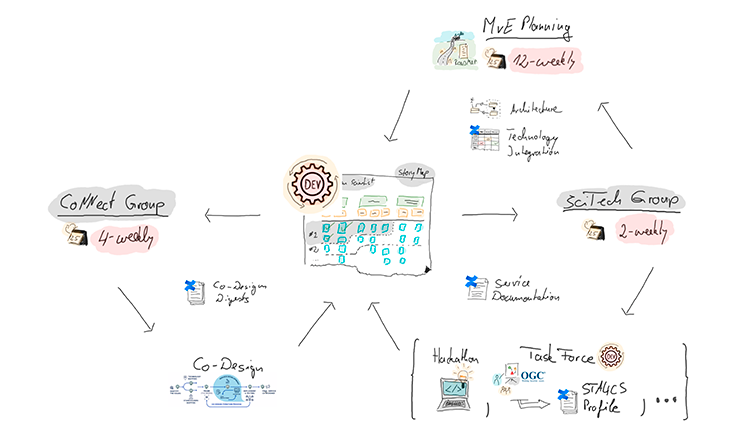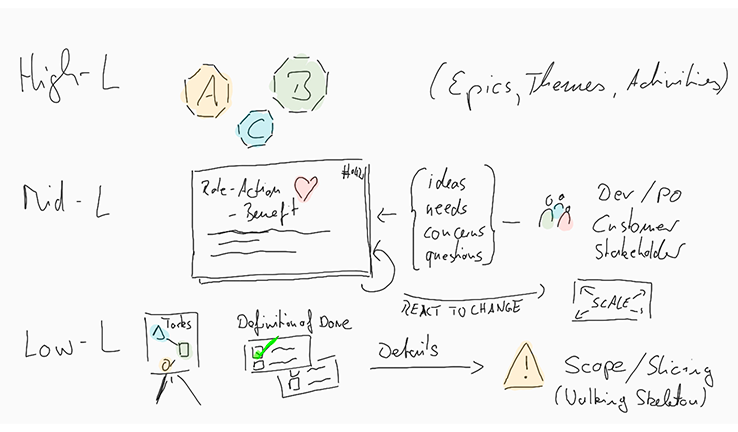
Henning Bredel studied Geoinformatics in Münster (Germany) and, since he got his degree, he has been working at 52ºNorth. In particular, he develops spatial web services and APIs. He is also developing and implementing standards to pave the way to collect, store, process and access geo data on the web in an interoperable manner. Currently, he works as part of Cos4Cloud’s team implementing the Agile methodology, which aims to constantly improve Cos4Cloud’s citizen science services by collaborating and collecting feedback from the stakeholders at every stage of the development.
Apart from Cos4Cloud, 52ºNorth participates in more citizen science-related projects?
Yes, we do! For example, one of them is enviroCar, which is an open citizen science platform for traffic monitoring and the environment. Moreover, we are creating interfaces to collect citizen-science data about Food-Water-Energy.
From your perspective, what are the citizen science challenges and opportunities? Which is the value of Cos4Cloud in this context?
Classical scientific data collection is very different from the citizen science approach. This means that while scientific methods and results have high quality but are limited in size, citizen science data doesn’t usually have such quality but is not limited in quantity. Therefore, I believe both ways of collecting data are complementary: citizen collection can be verified by the scientific one while enriching the biodiversity or environmental databases the scientific community needs for their studies.
In Cos4Cloud, we are working precisely to make that data more trustworthy and usable within the scientific field by developing 13 services to help citizen observatories to increase their data quality and quantity.
Some examples are DUNS, a service that will help acknowledge users and foster intrinsic motivation of contributors; AI-taxonomist, a service to integrate automatic species identification tools into a citizen science project or MECODA, an online tools repository to facilitate the analysis and viewing of all sorts of citizen science data.

And, what is ‘Agile methodology’?
Suppose you want to create a valuable technology for your identified users. In that case, it is essential to know their expectations to meet their needs and ensure we’re moving in the right direction.
Agile methodologies embrace change by technically implementing feedback loops and involving the stakeholders and end-users in all the development phases ‘before, during and after’.
In other words, the Agile methodology consists of an approach to working on a solution for a particular problem while continuously collecting and integrating feedback during the development process, which includes architectural design, maintenance, testing, documentation, etc.
How are you implementing it in Cos4Cloud?
Traditionally, agile development is mostly done in smaller cross-functional teams of 5-12 people developing one software. In the case of Cos4Cloud, we have a different situation: we are dealing with multiple teams developing one or more services aimed at all kinds of stakeholders related to citizen science. Therefore, our strategy is to implement agile methodology from a coordination level by creating a workflow to ensure all the services developers are connected to the relevant stakeholders and receive and implement their feedback.
Moreover, it is worth mentioning that in Cos4Cloud, we have also combined the co-design and Agile methodologies. How? Firstly, Science for Change, another Cos4Cloud partner, has organised and conducted a series of creative co-design activities to interact with the end-users to collect their needs, opinions and feedback on the services from the beginning. Then, according to the Agile principles, we have created a workflow to facilitate services developers to integrate users’ feedback, whenever possible, and monitor it. We are working now to do this workflow for the testing sessions.
Which value do you think brings to the citizen science projects developing tools to use Agile methodology?

I believe any project or development can benefit from early feedback because if you don’t consider your targeted users’ needs, your software will lose eligibility. For example, the Cos4Cloud services started with an incomplete set of functionalities but are now becoming functional tools for our targeted users: the citizen science community. Thanks to working with Agile methodology, we have been in contact with the end-users from the beginning and forced ourselves to think from a non-technical perspective by answering these essential questions at an early stage: Is the tool I am developing easy to use? Does it meet the needs of my end-users? How could I improve it?
Cos4Cloud will integrate the developed services in the new European Open Science Cloud (EOSC); why do you think this is important?

The EOSC is becoming a central access point for scientists to find and use services that support their research. By making our services available, we make it easier for them to re-use our developments and contribute to their sustainability over time.
For 52ºNorth, this is also at the core of our mission as we want to help scientists improve data sharing and analysis, and Cos4Cloud is a way to achieve it. Furthermore, we believe in the EOSC as a platform that offers scientists tools to improve their research implementation.

















